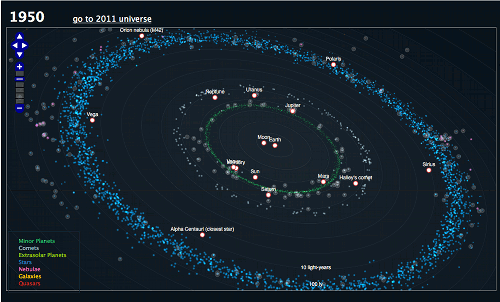The Royal Observatory, Greenwich, explains:
Includes a nice animation of the Doppler effect; explains red shifting of distance galaxies; and how we can use geometry (parallax) to determine the distance to nearby stars.
Middle and High School … from a Montessori Point of View
SunAeon has a wonderful app that shows what this week’s Venus transit will look like based on your location (see embedded below). If you want to see it yourself, you can build a pinhole projector. More details about the Transit of Venus here.

The dust in Mars’ atmosphere scatters red, while the major gasses in Earth’s atmosphere (Nitrogen and Oxygen) scatter blue light. Longer wavelengths of light, like red, will bounce off (scatter) larger particles like dust, while shorter wavelengths, like blue light, will bounce of smaller particles, like the molecules of gas in the atmosphere. The phenomena is called Rayleigh scattering, and is different from the mechanism where different molecules absorb different wavelengths of light.
Ezra Block and Robert Krulwich go into details on NPR.

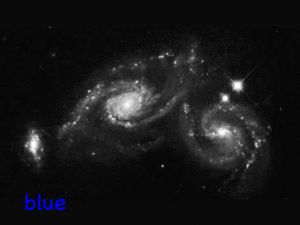
The Guardian has an excellent video that explains how the images from the Hubble Space Telescope are created.
Each image from most research telescopes only capture certain, specific colors (wavelengths of light). One camera might only capture red light, another blue, and another green. These are captured in black and white, with black indicating no light and white the full intensity of light at that wavelength. Since red, blue and green are the primary colors, they can be mixed to compose the spectacular images of stars, galaxies, and the universe that NASA puts out every day.
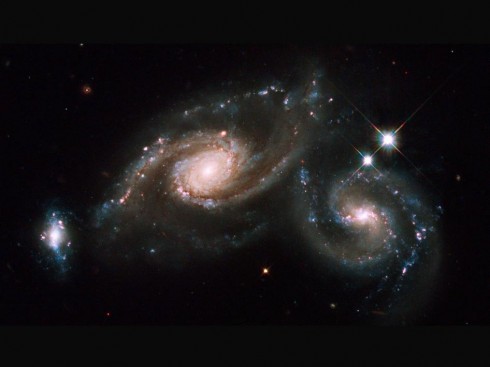
The process looks something like this:
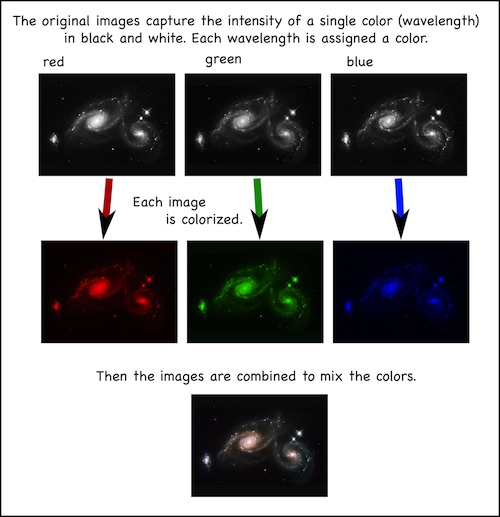
NASA’s image of the day is always worth a look.

Jason Shankel has an article on how we could go about changing the surface of Mars into something humans can live on. He does an excellent job of condensing the not insignificant literature on terraforming the red planet.
Starting with an explanation of Mars’ geologic history, Shankel addresses Martyn Foggs’ list of critical challenges:
- The surface temperature must be raised
- The atmospheric pressure must be increased
- The chemical composition of the atmosphere must be changed
- The surface must be made wet
- The surface flux of UV radiation must be reduced
— Shankel (2011): How We Will Terraform Mars on io9.com.
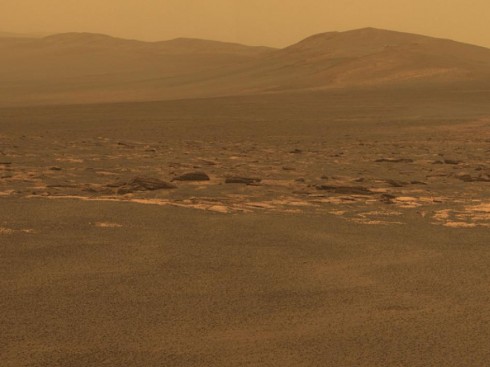
The article is expansive in its detail, provides a wonderful primer on the red planet, and demonstrates an excellent application of planetary system science (as opposed to Earth system science) to what would be an enormous geoengineering project. For example, to warm up the planet, Shankel starts with several approaches:
so how do we warm up the Martian poles? Several approaches have been suggested, from spreading dark material on the poles to lower their albedo, to industrial ice farming to good old fashioned thermonuclear detonations.
— Shankel (2011): How We Will Terraform Mars on io9.com.
He then goes into detail. Lots of detail, in a quite readable form.


The Voyager 1 spacecraft is rapidly approaching the space between the stars, where the Sun’s solar wind is pushed back by the interstellar magnetic cloud.
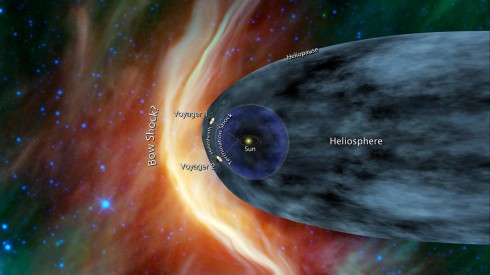
How far will it go? The spacecraft have enough power to last until 2020, when it will be about 20 billion kilometers from the Sun (it’s now about 17.8 billion km away). In 40,000 years it will drift “within 1.6 light years … of AC+79 3888, a star in the constellation of Camelopardalis” that’s about 17.6 light years away.
Consider the 40,000 years it will take Voyager to travel 17.6 light years, and the distance to Keppler 22-b, a recently discovered “Earth-like” planet that’s about 600 light years away.

Keppler 22-b is in the liquid water zone of it’s solar system: far enough away from its sun that water on its surface will not just boil away from the heat, yet close enough that the water does not just freeze solid instead. Liquid water is a key necessity for all life as we know it.
Everything depends on your point of view — more or less. Our picture of the universe has changed in the last 60 years as telescope technology has improved. Popsci has a great interactive visualization showing how much more we can see now.
Notice that in this picture, the Earth is at the center of the universe (the Sun is a little way off to the middle lower left). After all, we’re looking at the universe from the Earth, not the other way around.
